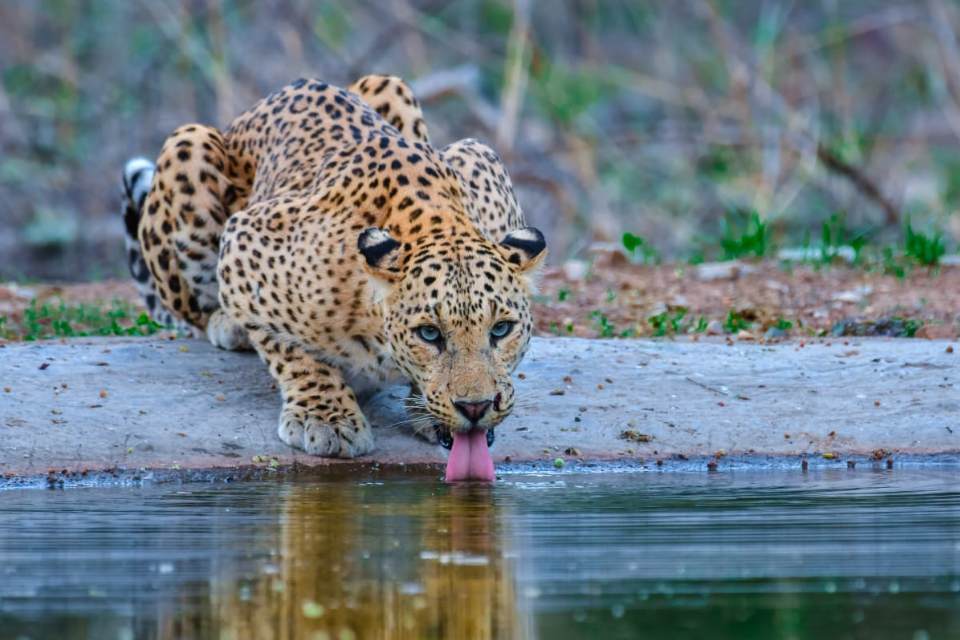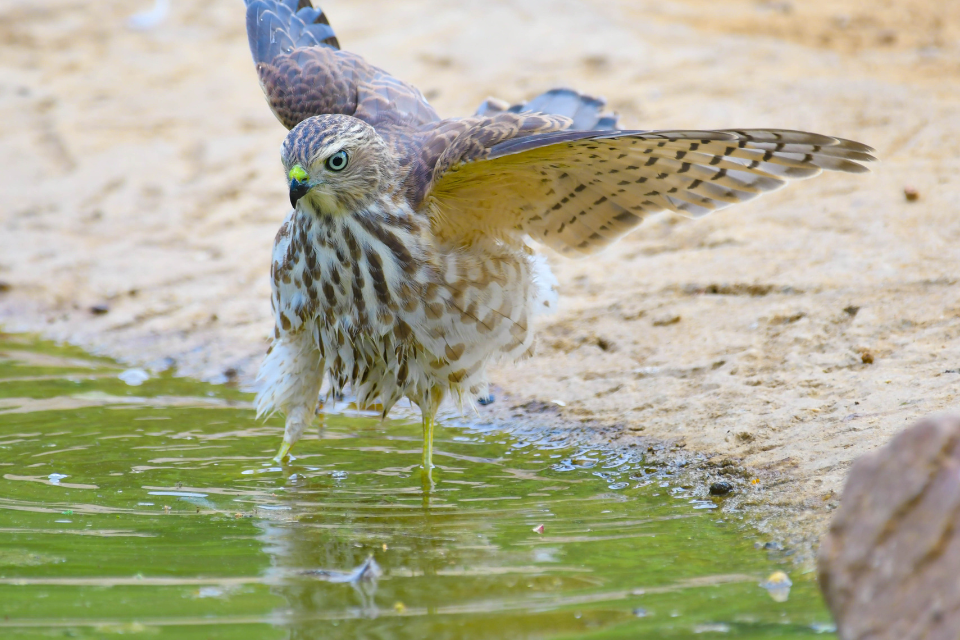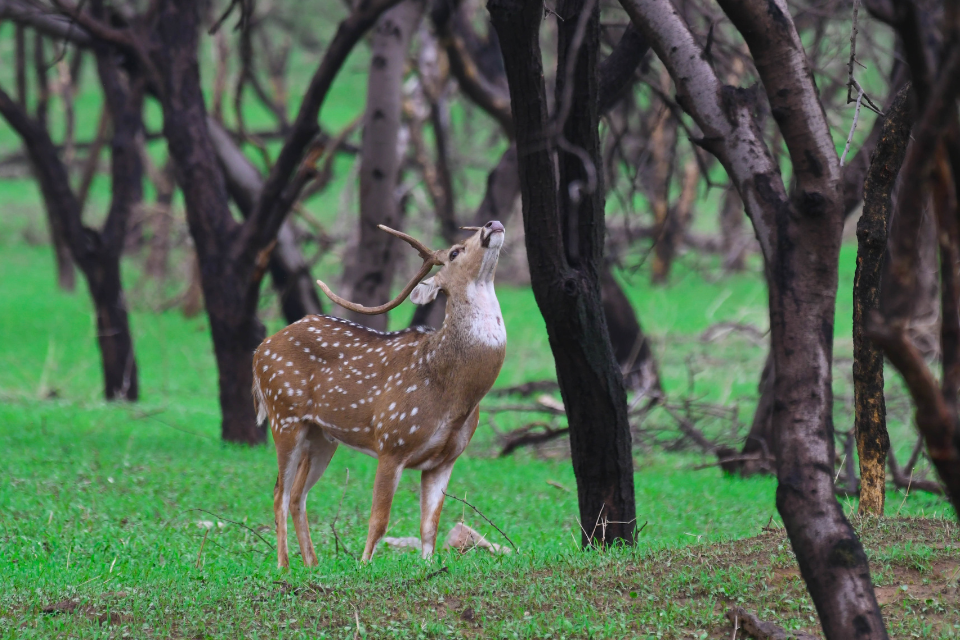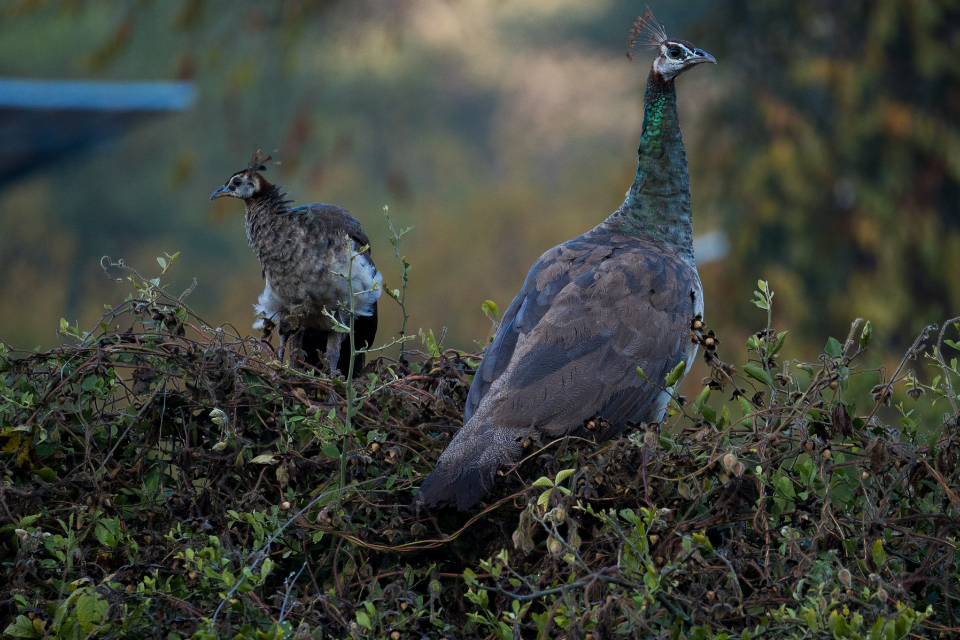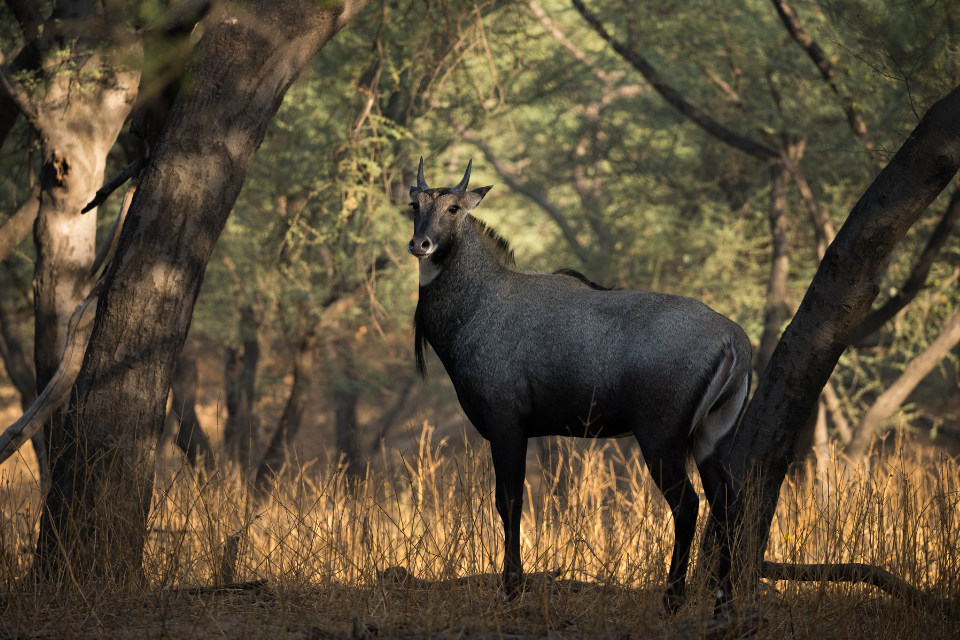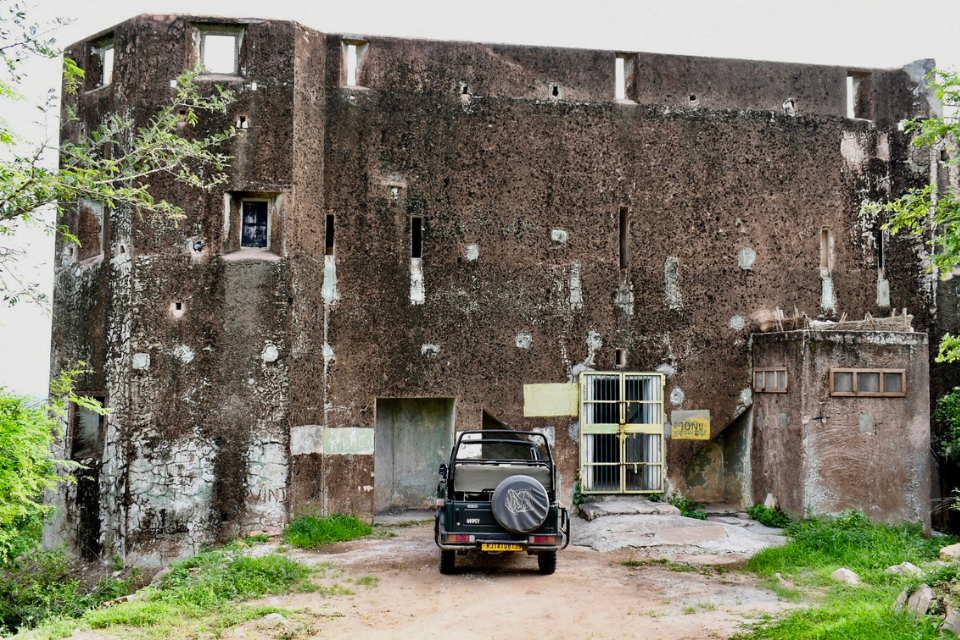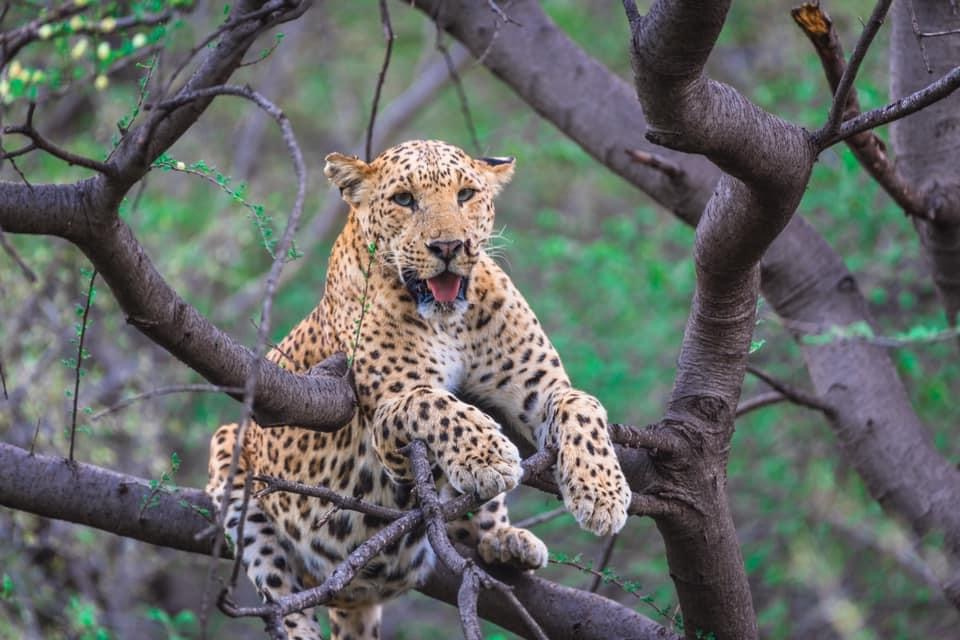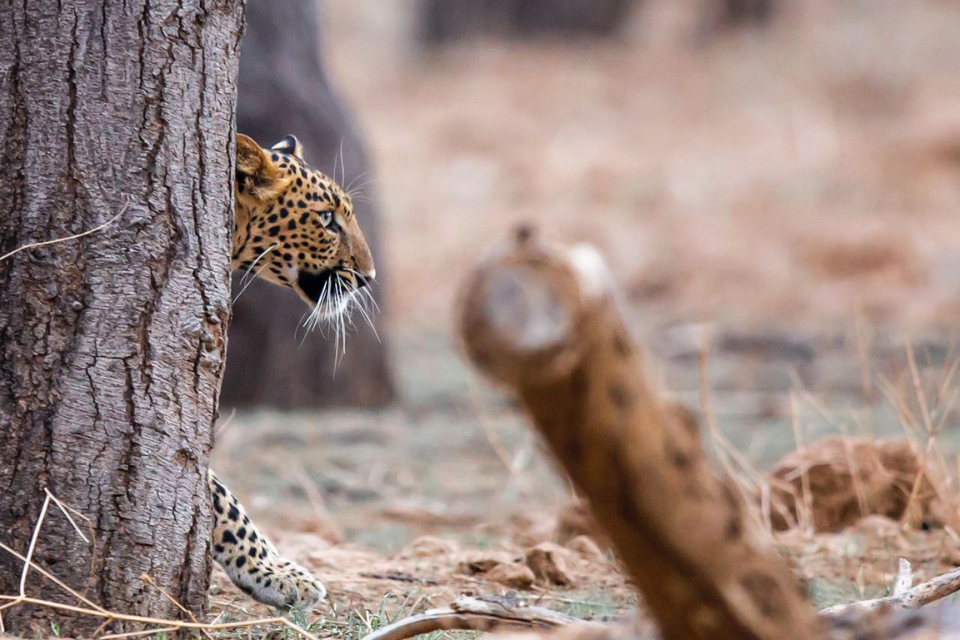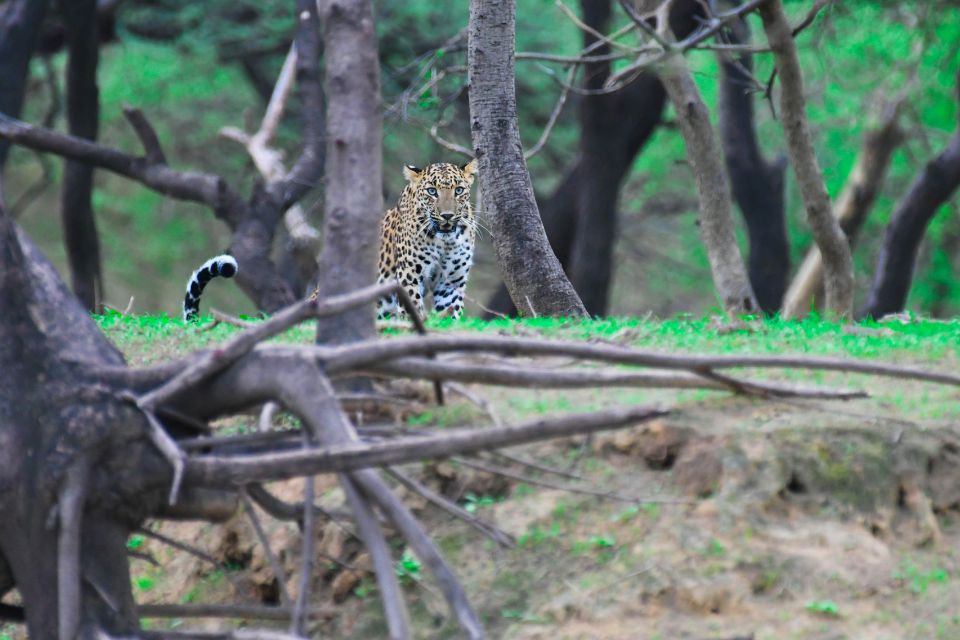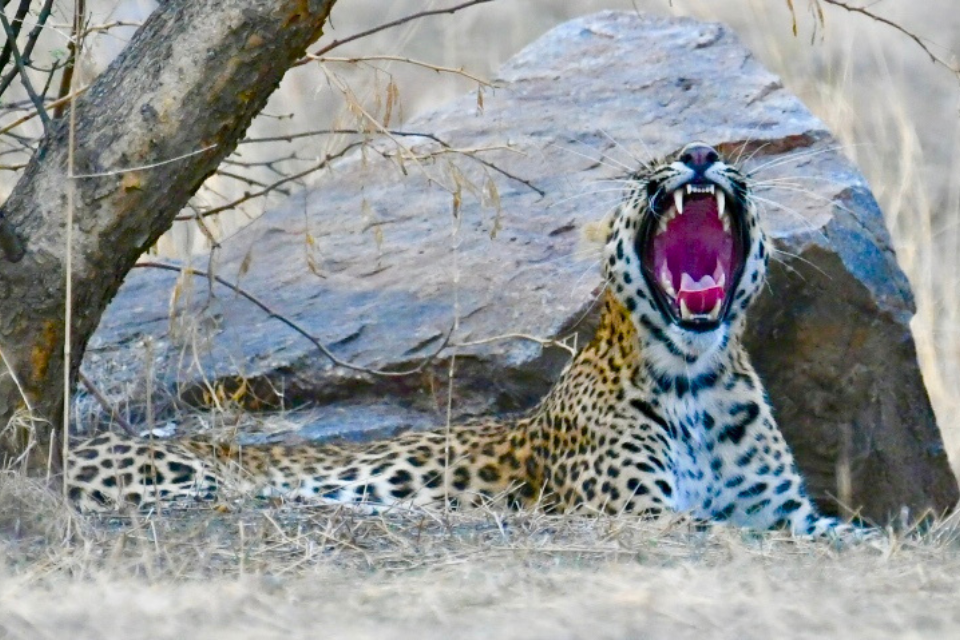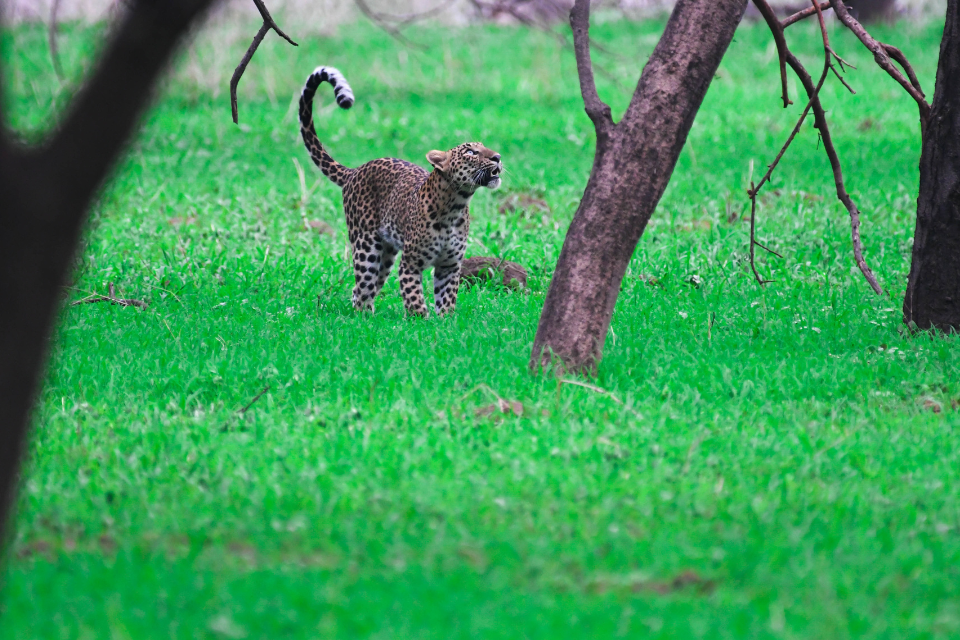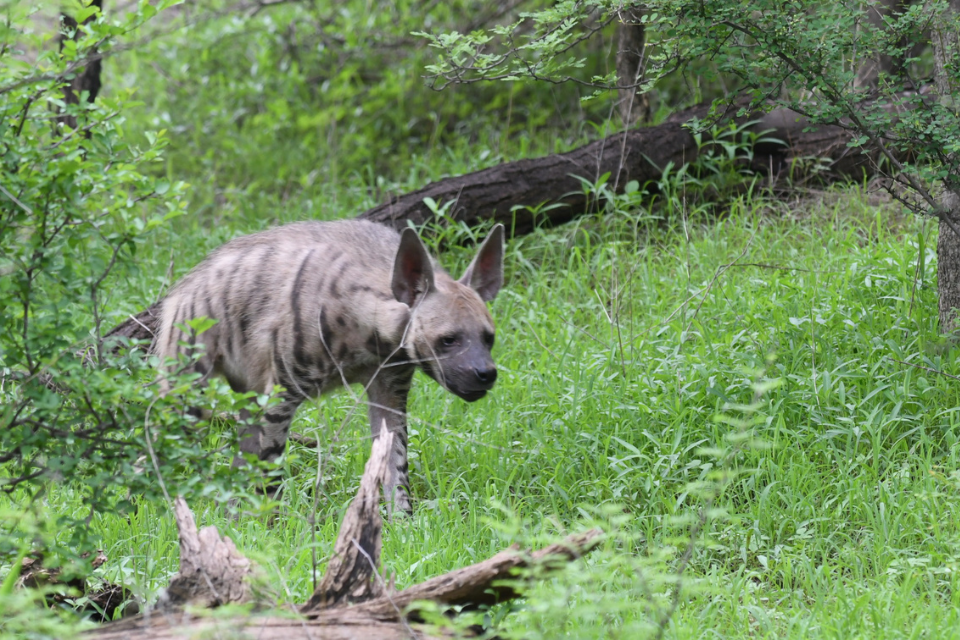- August 30, 2025
From Hunting Ground to Haven: Jhalana’s Conservation Journey
Introduction
Nestled on the outskirts of Jaipur, the Jhalana Leopard Reserve is one of India’s most fascinating wildlife success stories. Once infamous as a royal hunting ground where leopards and other wildlife were trophies of the elite, Jhalana has undergone a profound transformation.
In 2017–18, Jhalana was declared India’s first dedicated leopard reserve, marking a milestone in conservation. Today, instead of gunshots, the rustle of safari jeeps and the click of cameras echo through its terrain. The reserve stands as a haven for leopards and other species, and as a model of how history and conservation can converge.
Jhalana’s Royal Past: A Hunting Ground
The Era of Shikar (Hunting)
- During the princely states of Rajasthan, hunting—known locally as shikar—was a symbol of power, prestige, and entertainment for royalty.
- Jhalana, with its rocky Aravalli hills and dense vegetation, was a favored hunting ground for Jaipur’s maharajas.
- Leopards, deer, and antelopes were among the animals hunted in elaborate royal expeditions.
Post-Independence Continuity
- Even after independence, hunting remained a leisure activity for elites until the Wildlife Protection Act of 1972 outlawed hunting of wild animals across India.
- By then, Jhalana’s wildlife population had already been severely reduced.
Turning Point: The Conservation Movement
Protection Measures Post-1970s
- After the hunting ban, Jhalana slowly began recovering under state protection.
- Forest guards patrolled the reserve to curb poaching, while local communities were engaged in protecting the ecosystem.
The Leopard’s Survival Story
- Unlike tigers, leopards are highly adaptable. Despite shrinking forests, Jhalana’s leopards found ways to survive among the rugged terrain, caves, and scrub forests.
- By the 2000s, Jhalana had emerged as one of the few urban-adjacent forests with a healthy leopard population.
Birth of India’s First Leopard Reserve
The 2017–18 Declaration
- In 2017, the Rajasthan government officially declared Jhalana as India’s first leopard reserve.
- Spread over 23 square kilometers, the reserve became a model for leopard-focused conservation.
- The designation ensured stricter protection, eco-tourism development, and monitoring of leopard movements.
Why Jhalana Was Chosen
- High Leopard Density: Despite its relatively small size, Jhalana had around 25–30 leopards, making it one of the densest leopard habitats in India.
- Urban Context: Situated within Jaipur city limits, Jhalana became an example of wildlife thriving alongside urbanization.
- Tourism Potential: Leopard safaris were already attracting visitors, and the reserve’s new status gave global recognition.
Jhalana Today: A Leopard Paradise
Leopard Population
- Home to 30–35 leopards, with high chances of sightings during safaris.
- Leopards are the apex predators here, as tigers and lions are absent.
Other Wildlife
- Hyenas, jackals, desert foxes, striped hyenas, and jungle cats.
- Herbivores like nilgai (blue bull), spotted deer, and sambar deer.
- Over 150 bird species, making it a birdwatcher’s delight.
Eco-tourism & Safaris
- Organized jeep safaris allow visitors to experience leopards in their natural habitat.
- Guides share stories of Jhalana’s past and its conservation efforts, connecting history with modern eco-tourism.
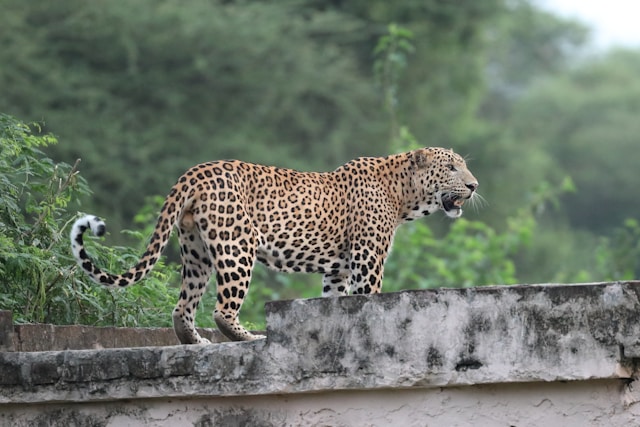
Conservation Significance
- Leopard-Focused Model
- While tiger reserves dominate India’s conservation map, Jhalana was pioneering in dedicating protection to leopards.
- Its success has inspired similar efforts in places like Jawai (Rajasthan) and Bera.
- Coexistence with Urban India
- Jhalana demonstrates how wildlife can survive amidst expanding cities, provided habitats are safeguarded.
- Community Involvement
- Safari operations provide livelihood to locals, aligning economic incentives with conservation.
- Awareness & Education
- By attracting tourists and researchers, Jhalana builds awareness about leopard ecology and the importance of conserving India’s lesser-known big cats.
Challenges and the Road Ahead
- Urban Encroachment: As Jaipur expands, ensuring buffer zones around Jhalana is critical.
- Human-Wildlife Conflict: With the reserve’s proximity to the city, occasional leopard straying needs careful management.
- Water Scarcity: Maintaining waterholes in arid months is vital for wildlife survival.
- Carrying Capacity: Balancing tourism and ecology to prevent overexploitation.
The future of Jhalana depends on sustainable eco-tourism and continued government commitment, ensuring leopards remain the pride of Jaipur.
Conclusion
From being a royal hunting ground to becoming India’s first leopard reserve, Jhalana’s journey embodies the transformation of India’s relationship with wildlife. What was once a playground for hunters is today a protected sanctuary where leopards roam free, and humans come only to admire, not to hunt.
Jhalana stands as a testament to the idea that conservation is not about erasing history but about learning from it—turning past exploitation into future preservation.
For Jaipur, it is not just a reserve; it is a symbol of coexistence, resilience, and hope for India’s wildlife.
FAQs
Q1. Why is Jhalana Leopard Reserve significant?
Because it is India’s first dedicated leopard reserve, showcasing conservation focused on leopards instead of tigers.
Q2. Where is Jhalana located?
On the eastern edge of Jaipur, Rajasthan, spread across ~23 sq km.
Q3. How many leopards are in Jhalana?
The reserve has about 30–35 leopards, making it one of the densest leopard habitats.
Q4. When was Jhalana declared a leopard reserve?
It was formally recognized in 2017–18 by the Rajasthan government.
Q5. Can tourists visit Jhalana?
Yes, jeep safaris operate daily, offering high chances of leopard sightings.
Q6. What other wildlife is found in Jhalana?
Hyenas, foxes, nilgai, deer species, and over 150 bird species.
Q7. How is Jhalana different from tiger reserves?
It is leopard-centric, small in size, and located within an urban city boundary.
Q8. What challenges does Jhalana face?
Urban encroachment, water scarcity, human-wildlife conflict, and balancing tourism.
Q9. Has Jhalana inspired other reserves?
Yes, its model has influenced other leopard conservation landscapes like Bera and Jawai.
Q10. Why should tourists visit Jhalana?
For its guaranteed leopard sightings, unique urban-wild interface, and heritage-rich story.
Disclaimer All images used in this blog are either sourced from public domain or credited to their respective owners. If you are the copyright holder of any image and wish to request its removal or proper attribution, please contact us at [email protected]



